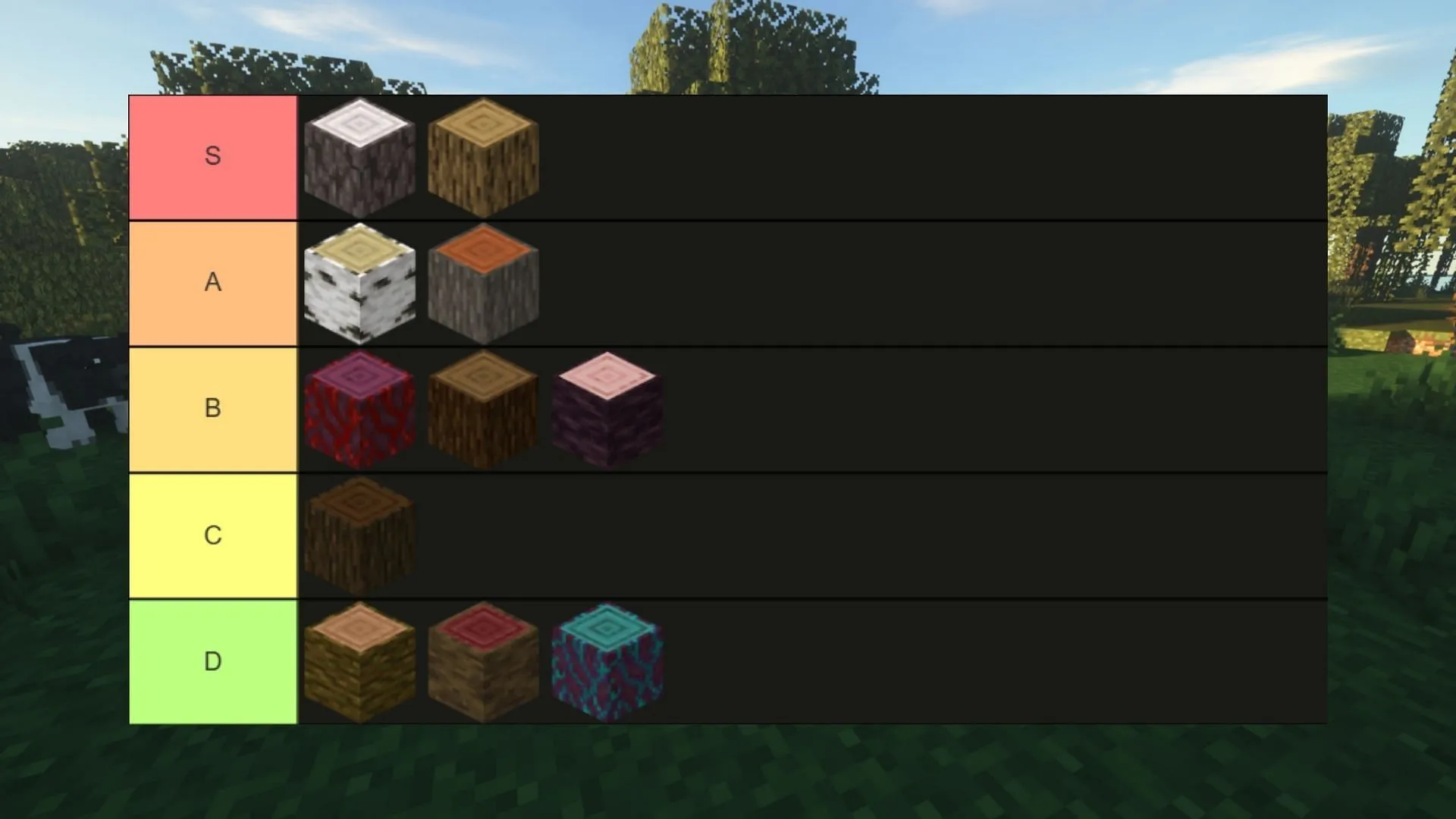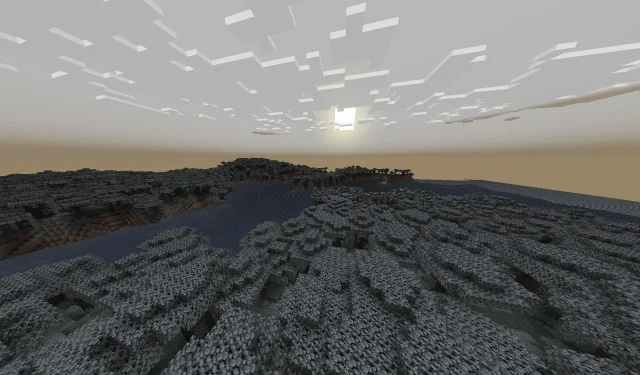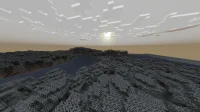Minecraft’s diverse range of wood types has sparked much discussion among players regarding the best options for crafting various projects. With eleven distinct wood variants available, players are truly spoiled for choice. However, certain types stand out above the rest based on criteria such as aesthetics, availability, generation, and functionality.
To assist you in selecting the ideal wood for your next grand project, here’s a comprehensive tier list ranking the wood types in Minecraft.
Minecraft Wood Tier List

In Minecraft, players can utilize eleven different wood types to craft an array of items, ranging from intricate castles to everyday necessities like boats and doors. While these woods do not confer any functional advantages, aspects such as their visual appeal and availability significantly influence their tier placements.
Here’s the ranking of wood types in Minecraft:
S-Tier Woods
- Oak
- Pale Oak
Striking first on the S-tier is Oak, which is readily available across numerous biomes. Its ubiquity makes it a foundational wood type, perfect for constructing everything from initial crafting benches to advanced weaponry. Moreover, Oak’s natural hue enhances the aesthetic of any build.
Newly introduced in the 2024 update, Pale Oak has quickly garnered a following among players who appreciate its hauntingly beautiful appearance. Found exclusively in the Pale Garden biome, this wood not only adds an eerie charm but is also essential for crafting the unique creaking heart item used to summon the creaking mob.
A-Tier Woods
- Birch
- Acacia
Moving on to the A-tier, Birch is a standout choice due to its iconic appearance, easily recognizable from afar. Birch trees thrive in various biomes, offering players convenient access to this beloved wood type.
Acacia, with its distinctive color, is an excellent material for crafting furniture, decor, and more. The striking contrast of Acacia wood enhances builds, creating a bold visual representation within the Minecraft landscape.
B-Tier Woods
- Crimson Stem
- Spruce
- Cherry
In B-tier, we encounter Crimson Stem, notable for its unique texture, which features veiny patterns that lend a vibrant character to any construction, a prized material for those who venture into the depths of the Nether.
Sitting alongside it is Spruce, a reliable wood type found across many biomes including taiga and snowy plains. Its commonality offers players ease of access, making it a practical choice for various projects.
The Cherry biome presents one of the most visually breathtaking environments in the game. Cherry wood itself boasts a commendable texture, making it ideal for minimalistic constructions that emphasize natural beauty.
C-Tier Woods
- Dark Oak
Only Dark Oak graces the C-tier, representing a darker variant of standard Oak with an ancient bark texture reminiscent of woodland mansions. While it may be less popular, Dark Oak serves as an interesting contrast in builds, providing depth and a unique combination when paired with lighter woods like Pale Oak and Birch.
D-Tier Woods
- Jungle
- Mangrove
- Warped
The D-tier includes some of the less desirable wood types in Minecraft. Jungle wood, with its somewhat bland appearance, is often perceived as a variation of Oak but with horizontal stripes, and it has limited biomes where it can be found.
Mangrove wood, restricted to its specific biome, is often seen as more utilitarian, finding favor as fuel in furnaces or in creating fences for newly introduced mobs.
Finally, Warped wood, sourced from the Nether, is not typically worth the risk it incurs. Players are better off using alternatives unless they are constructing horror-themed builds where its bluish hue may add an intriguing element.


